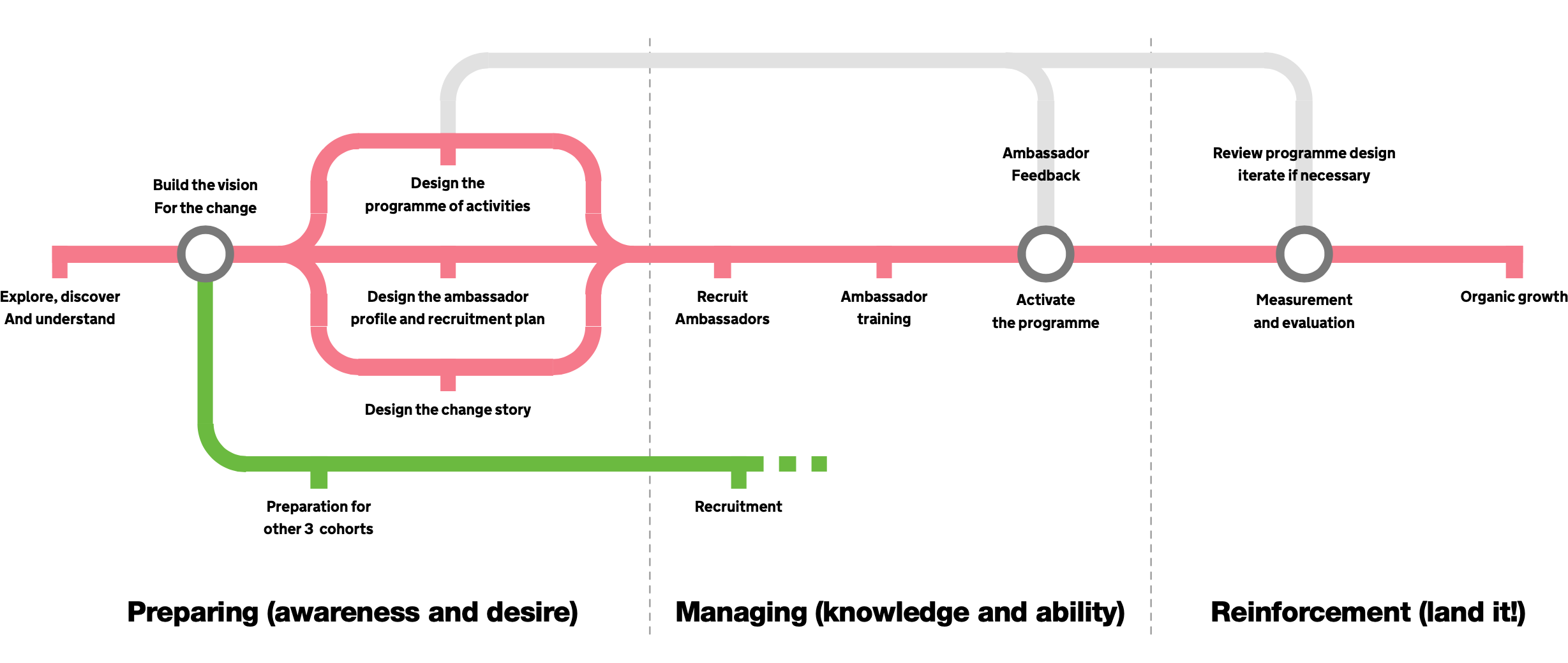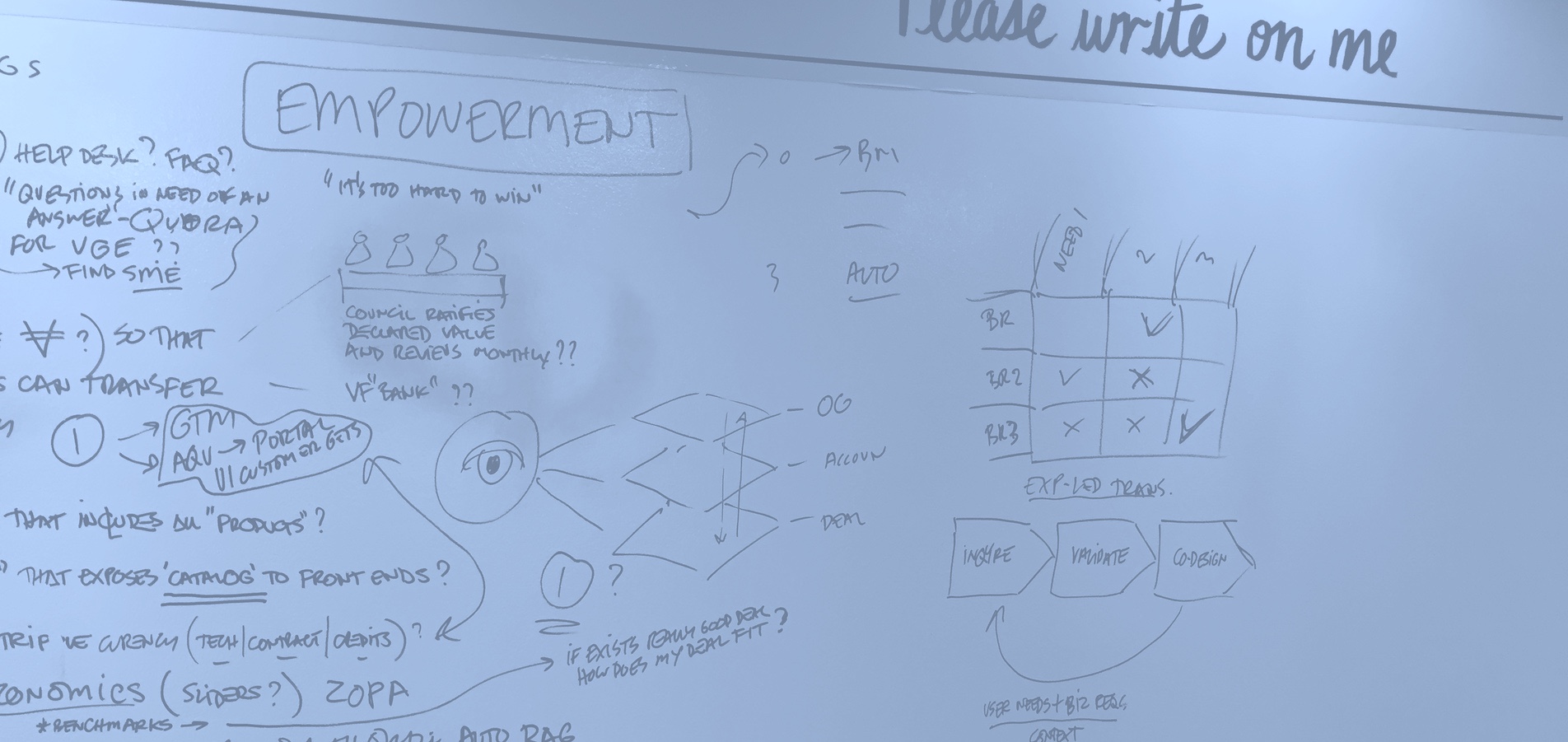Spotting the problem
At the start, our design team knew there were issues in how we worked with other teams in the bank.
- We knew that design needed to be more central to the bank’s strategy.
- There weren’t yet specific methods in place to guide how our team could play a strategic role in our customers’ work.
-
Stakeholders would often come to us too late in the strategy-to-delivery product delivery lifecycle, making our job harder.
An Early Sign: In one of my team’s first research sessions we were told that “we already know what the customer wants” and were challenged to explain “why are we doing this all over again?”. It was clear our process was an unknown to them and that I had a lot of advocacy ahead.
Create the narrative for change
Coming in as an outsider and taking responsibility for teams already engaged in delivering on a backlog of work, I took the time to establish that we could deliver as requested and that we could be trusted.

Once in-flight delivery was de-risked, I could focus on engaging stakeholders with the idea that we were a team that could help them figure out what problem to solve, as well as how to solve it and with what deliverables.
- We were able to leverage my background in strategy consulting to share problem space analysis tools and methods with our stakeholders and start to engage them with the design thinking process
- While I led the first sessions mostly myself, we delivered as a team, so my colleagues could learn to facilitate the workshops themselves
- I created training materials to ensure the know-how could spread in our wider team
-
Showed my team (by doing it) that it was possible to negotiate with and influence our customers to bring them around to a design-led approach
Turning Point: In a department-wide planning workshop, when discussing how the team would decide what should happen next, our product owner explained that we should do “one of Dug’s workshops” to ensure we factored in the end-user. This led to a deeper discussion, and since then, we found ourselves engaged at a much earlier stage in projects.
Realising results
By the end of my time with the bank:
- The word had spread beyond our immediate product org and we were being engaged by senior stakeholders from across the business unit
- We had example deliveries to share with colleagues as exemplars which showcased our team’s value in business terms
-
The engagement level in the team was much higher as they had started to overcome their stated number one problem which was stakeholders who did not understand Design
A Notable Win: This year my team was made an official partner in the planning and resourcing of work. As result we were able to write more governance tickets flagged as “strategic” than ever before. We’re helping shape projects from the start, and in many cases even before the start:-)
In essence, while we started as a team that was often called in late, and often for the wrong reasons, by the end, we were showing how vital Design was to the bank’s success.
Can I help you solve a similar problem? dug@goodlookslikethis.com
